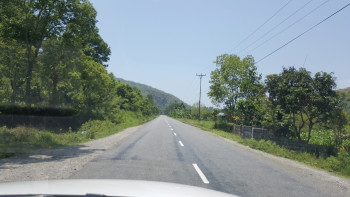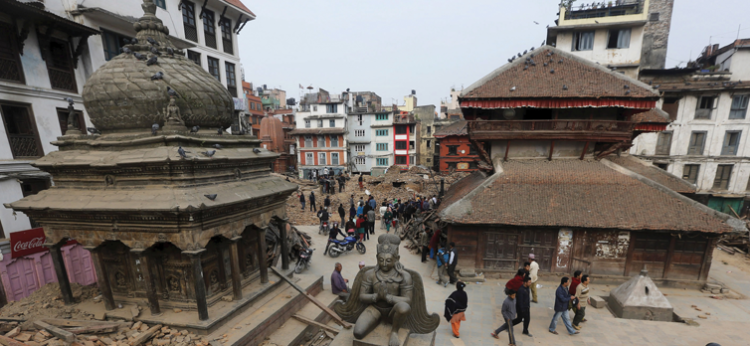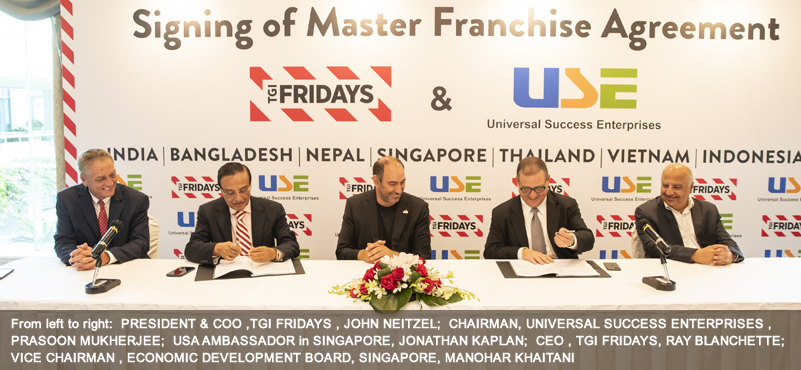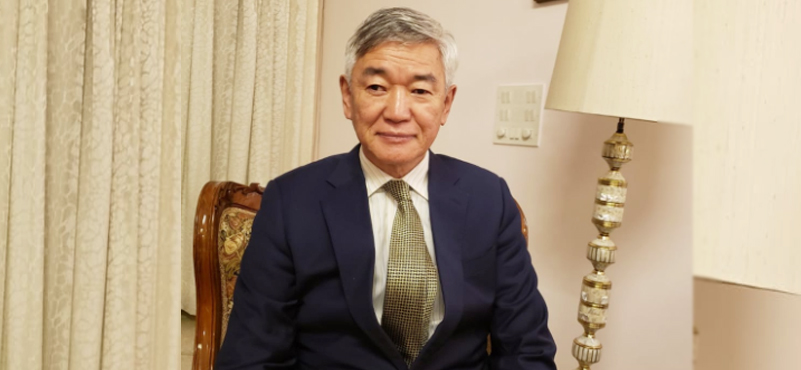Nepal suffered nature’s fury over the last fortnight. The loss of lives and property has been widely reported. We believe that tourism provides more instant relief for the country, as fortunately many or most of the tourism assets have remained largely intact. Perceptions can remain a problem, but the ground reality is that tourism can be the up-and-about industry, that will keep the country’s economy moving. Sadly, what has been lost is the weaker structures both in Kathmandu Valley and around. Some of the historic heritage has been lost, but we hope this is largely documented and may take a few years to get rebuilt. We have everything to cry about, given the enormous loss of lives. But tourism will go on, as life must!
Over the years, the tourism industry has spread its influence far and wide – some 40 international airlines presently fly into Nepal, not a mean achievement. These give the country a wide area of outreach. Two of its closest neighbours, China and India, have a good inflow into Nepal with tourists of wide interests coming into the country. They are trekkers and adventure seekers but also just plain vanilla tourists coming to experience the lure of the country. For them, most of the tourism product remains intact, even as the people shake themselves out of the devastation and fear. Most of the hotels are also intact and so is the airport. The roads to Chitwan are intact and so is the road to Pokhara. All the international airlines continue their flights. As the dust settles, given the unwavering determination of the hardy Nepalese people, we believe tourism will start picking up anytime soon.
For us in India, tourism is also a renewal of our age old ties, with this Himalayan kingdom that has been also a much revered pilgrimage with its numerous temples, some of them among the most sacred to Hinduism. This is a bond that cannot get overlooked, steeped as it is, in our spirituality and tradition and sacred belief. Indians will happily continue to flock to Nepal, to offer their prayers to the deity and to use the opportunity to also play tourists. Nepal was the favourite destination for Indians seeking to go abroad, some four decades ago, when the travel bug first began to bite the Indian traveller. Much has changed over this period. From shopping then, it could be MICE that could and will beckon the Indians. The casino attraction is still there and so are the people and the bustling bazaars. These will return to Kathmandu in the weeks ahead. And the lure of Nepal abides, and this is therefore, a good time, for renewal of this spirit to travel and explore Kathmandu and beyond.
It is a fact that Indian travellers offer the most immediate and closest succour to Nepal for near instant business flows to happen. Over the last four decades, the Indian buying power has grown considerably and Nepal offers an affordable holiday for a larger section of the Indian market. It could be a market waiting to be explored.
By Navin Berry

For Nepal often popularly called as the Himalayan Kingdom, the cumulative impact of the recent spate of earthquakes have been no less than a Himalayan tragedy. Over 7000 dead, nearly 70,000 homes destroyed and a large population base of 9 million affected – the nation has been forced to witness a devastation which it had never faced before in its modern history. That international community including India aggressively pitched in helping in the rescue operations and humanitarian aid have been flowing from all directions, the moot question which begs an answer is: what will it take to bring back the nation in a fine fettle again? An international financing agency has projected that after the dust finally settles, the country will need an assistance of $ 20 billion in restoration of what it has lost. And that it will involve an assiduous effort of at least five years to effectively bring a turnaround.
Even as different agencies are currently involved in gauging the precise extent of damage, another critical point which observers have begun selectively discussing is the possible driver which will spearhead the Himalayan Kingdom’s revival. And here some fingers are also pointing in the direction of tourism, a sector which has evolved as a stronghold turf for the land-locked country in the past five decades.
Capacity addition makes tourism an engine of growth for Nepal
The tourism sector in Nepal today is clearly the flag-bearer of its economy. Its contribution to the nation’s GDP is in 8-9 percent range and within the services portfolio of Nepal, it is the largest employment generator – every one out of nine working Nepalese is depending on tourism today. The country has broadly touched an arrival number of around 8 lakh, even as the targeted one million figure has remained elusive which is mainly attributed to the rise in Maoists insurgency in the past decade. In a generic global sense, any tourism observer would say Nepal’s tourism report card does not have much to be talked about. But talk to any economist specifically examining Nepal’s economy and its ground realities, the chances are, his verdict would be: tourism in Nepal has evolved as a dynamo.
That tourism has been a happening activity in Nepal is well testified by the kind of capacity addition which the country has noticed in different verticals and also in the changing profile of visitors in the last three decades. If one examines the traditional pattern of arrivals, then holiday pleasure trips followed by trekking and mountaineering were the lead drivers till 1990. Pleasure trips which had a hefty share of about 63.5 percent 25 years ago in total arrivals, however, had declined to around 30 percent in 2008. The share of adventure tourists in the same period, on the other hand, has grown steadily – from around 15 percent to 21 percent. The biggest gainer has been the pilgrimage tourism which has evolved from a low base of 2.6 percent in 1990 to around 10 percent in 2007.

A massive change has also been registered in the accommodation base. The data presented in a report on Nepal tourism presents the scenario between 1985 to 2001 that highlights a high-growth pattern in the hospitality sector in Nepal. “Compound growth rate of number of hotels has been 15.56 % per year during 1985-2001. The number of hotels increased to about 11 times from a small base of 76 in 1985 to 888 in 2001. Similarly, the number of total beds increased by 10.37% in the stated period. Growth rate of star hotels has been 2.32% a year while their number of beds increased by a growth rate of 2% per year during 1985-2001. On the other hand respective growth rate for the non-star categories has been very high at 19.74% and 14.68% per year. Relatively faster expansion of non-star categories of hotels in Nepal might be due to the reason of low cost involvement, short development period and higher demand for low cost hotels by the tourists,” the report earmarks. By the end of 2008, Nepal had a total of 669 hotels offering an inventory of over 13,000 rooms in the registered category.
Air transportation has emerged as the main mode of arrival in Nepal in the last two decades (about 5.70 lakh tourists had come by airways in 2014) and in this segment too the country has made some significant gains. While in the early decades of 60’s and 70’s, air traffic was mainly handled by carriers from India, Royal Nepal Airlines and Pakistan Airlines, after 1990 a host of other carriers too have brought Kathmandu Airport on their global operational map. These include airlines from Bangladesh, Thailand, China, Bhutan, Russia, Singapore, Austria, Qatar and Saudi Arabia. So when seen through a holistic prism, the point that Nepal had created quite a tourism base is not lost on anyone.
Earthquake affects the heritage sites
The devastating 7.8 magnitude earthquake (and a series of aftershocks) that violently shook Nepal has left some serious dents in its tourism assets as well. These include a number of its iconic UNESCO World Heritage sites and most popular tourist attractions — some dating more than 1,700 years — reduced to piles of rubble. Among the well-known Kathmandu landmarks destroyed by the quake was the 100-foot Dharahara Tower, which was cut down to a 30-foot pile of jagged brick. Originally built for the queen of Nepal in 1832, the lighthouse lookalike was rebuilt following a powerful 1934 earthquake that claimed more than 16,000 lives. In the hours after the quake, rescuers picked through the rubble of historic structures around the region, including ancient wooden Hindu temples. Irina Bokova, the Director-General of the UN’s cultural organisation, Unesco, said there had been “extensive and irreversible damage” at the world heritage site in the Kathmandu valley. Seven monument zones in the valley make up the world heritage site, out of which three urban zones (anchored by Darbar Squares) in the settlements of Kathmandu, Bhaktapur and Patan are believed to have been totally destroyed. The four other zones which are primarily religious sites – Buddhist stupas [monuments] at Swayambhunath and Boudhanath and Hindu temple complexes at Pashupatinath and Changu Narayan are reported to have suffered partial to serious damages. The main temple in Bhaktapur’s square has lost its roof, while the 16th Century Vatsala Durga temple, famous for its sandstone walls and gold-topped pagodas, has been demolished by the quake. The Buddhist temple complex at Swayambhunath, founded in the 5th Century, has also been damaged though its iconic central stupa, with its gazing eyes of the Buddha, stands intact. The shrine at the Pashupatinath Hindu religious complex has not been damaged in a major way in the disaster.
Will tourism lead the revival?
While these are the early hours wherein the Nepalese government is trying to assess the extent of the overall damage before putting in place a revival plan (in association with multilateral agencies and friendly countries like India) of putting together the broken pieces, analysts on a low-key basis though have begun pondering over the prospects of the country’s revival with a new version of tourism leading the Herculean task. Though nobody is ruling out that in the near-run the country will have to struggle to garner the arrival numbers, there are observers who believe that global adventure tourists hooked on to the majestic Himalayas will return soon. “Those who come for trekking and mountaineering (the Annapurna area near the lakeside town of Pokhara, Nepal’s trekking hub, was relatively undamaged) will likely be the first to return when the post-earthquake dust settles,” Patricia Schultz, the author of the New York Times best-seller “1,000 Places to See Before You Die,” wrote in a recently published article.
Some analysts are also asking for bringing in a new focus in tourism development as the part of the larger re-building programme. The broader argument is with country’s economic mainstay agriculture being in a stagnated mode, the chances of expeditious revival can only be driven by tourism. And here the emphasis has to be in ensuring holistic development of new destinations. “One of the bright spots going forward is that tourism still has a lot of potential in Nepal… In the devastated village of Paslang, there are opportunities to rebuild in a way that will make it an attractive destination for tourists. The Ganesh Himal range of mountains, which looks down on Paslang, is home to four peaks higher than 7,000 metres,” writes Clifford Coonan, the Asian Bureau Chief of The Irish Times. Some analysts are also calling for the launch of a massive tourism rejig programme as the vehicle for rebuilding which should address basic bottlenecks which have existed for too long- lack of road network, unskilled manpower in the tourism sector, etc. While it remains to be seen what the Nepalese government ultimately decides in terms of using tourism sector for the nation’s revival, a clear incentive to do so seems to come from this comment which was put on a social media site by an adventure tourist from Europe: “You can take my body out of Nepal but you can never take out my soul and heart.” For some, the call from the Himalayan Kingdom will always remain irresistible and herein lies the hope for the devastated country to script its destiny afresh.
By Ritwik Sinha




































